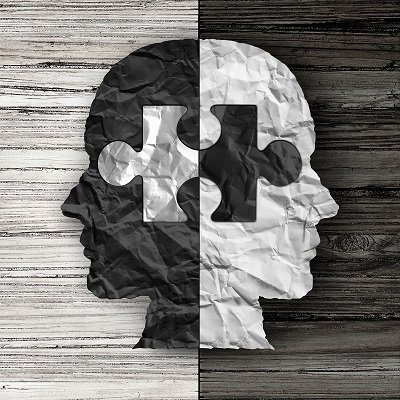Black and white thinking is a cognitive distortion that is characterized by the tendency to see things in extremes, with no shades of grey in between. This type of thinking can have a profound impact on your mood and behavior, leading to negative emotions such as anxiety, depression, and frustration. In this article, we will explore how black and white thinking affects your mental health, and what you can do to overcome this cognitive distortion.
What is black and white thinking?
Black and white thinking, also known as dichotomous thinking, is a type of cognitive distortion that is characterized by the tendency to see things in absolutes, with no shades of grey in between. This type of thinking can manifest in various aspects of life, from relationships to work to personal beliefs. For example, you may think that someone is either completely good or completely bad, or that a situation is either all good or all bad, with no in-between.
The problem with black and white thinking is that it is not reflective of reality. In reality, most situations and people are complex, and there are many shades of grey in between. When you view the world in black and white terms, you are ignoring this complexity, and your thinking becomes rigid and inflexible.
How does black and white thinking affect your mood?
Black and white thinking can have a profound impact on your mood, leading to negative emotions such as anxiety, depression, and frustration. When you view the world in black and white terms, you are more likely to experience intense emotions, as there is no room for moderation. For example, if you believe that a situation is either all good or all bad, you may feel extreme happiness when things are going well, but extreme despair when things go wrong.
Black and white thinking can also lead to negative self-talk, as you may view yourself in extreme terms as well. For example, if you make a mistake, you may label yourself as a complete failure, rather than acknowledging that everyone makes mistakes and that this does not define your entire being.
How does black and white thinking affect your behavior?
Black and white thinking can also have a profound impact on your behavior, as it can lead to rigid and inflexible thinking patterns. When you view the world in black and white terms, you are less likely to consider alternative viewpoints or solutions, as you believe that there is only one right way to do things. This can lead to conflicts in relationships and work, as you may be unwilling to compromise or consider other perspectives.
Black and white thinking can also lead to perfectionism, as you may believe that there is only one perfect way to do things. This can lead to procrastination and avoidance, as you may be afraid to start a task if you believe that you cannot do it perfectly. This can also lead to self-criticism and low self-esteem, as you may be unable to meet your own unrealistic standards.
How to overcome black and white thinking ?
Overcoming black and white thinking is not easy, as it requires a willingness to challenge your own thinking patterns and beliefs. However, with practice, it is possible to develop more flexible and balanced thinking habits.
Here are some strategies that you can use to overcome black and white thinking:
Practice mindfulness: Mindfulness is the practice of being present in the moment, without judgment or distraction. By practicing mindfulness, you can become more aware of your thoughts and feelings, and learn to observe them without getting caught up in them. This can help you to develop a more flexible and balanced perspective on the world.
Challenge your thoughts: When you notice yourself engaging in black and white thinking, challenge your thoughts by asking yourself questions such as “Is this really true?” or “Is there another way to look at this?” This can help you to see situations and people in a more nuanced and realistic way.

